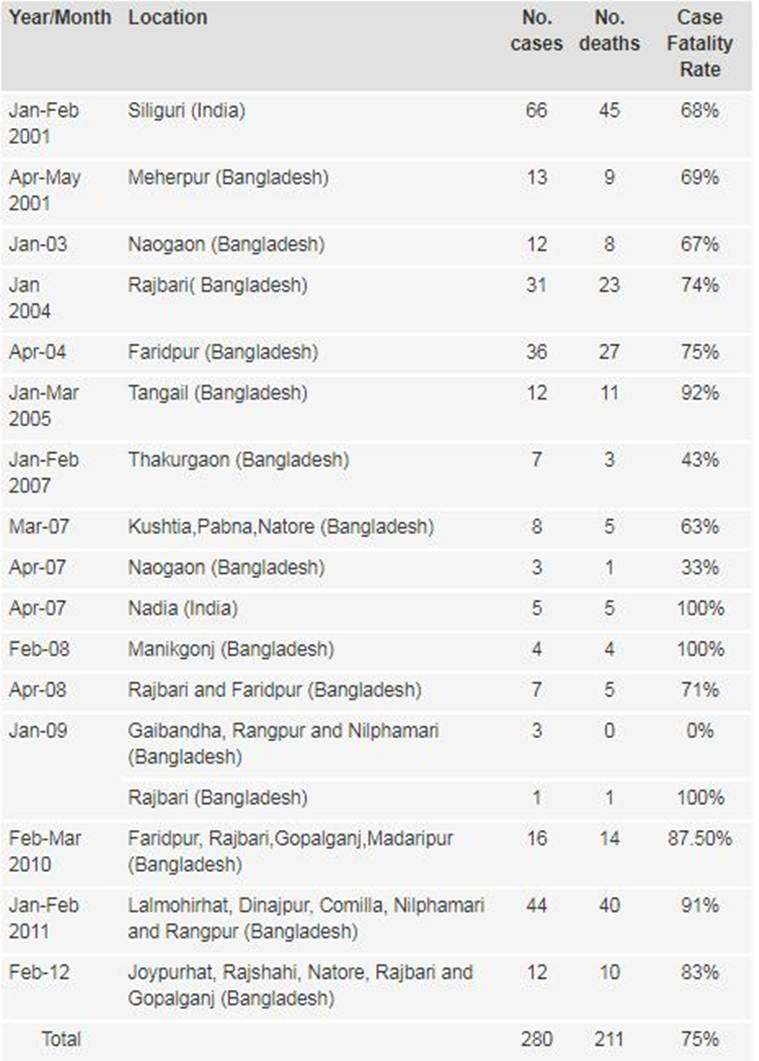 Health Minister KK Shylaja asked people not to panic and believe rumours generated on social media. (AP Photo/ Representational)
Health Minister KK Shylaja asked people not to panic and believe rumours generated on social media. (AP Photo/ Representational)
At least three people have died due to a rare infection caused by Nipah virus in Kerala. The National Institute of Virology in Pune has attributed three deaths in Changaroth village of Perambra to the virus. The Kerala health department has also reported eight other deaths which are suspected to be linked to the virus.
Health Minister KK Shylaja asked people not to panic and believe rumours generated on social media. Medical camps have also been oraganised to assist people who may be developing symptoms of viral fever. A control room has also been set up in order to inform people about the symptoms and treatment of the virus.
Nipah is infection spread through fruit bats and can both affect humans as well as domestic animals including dogs, cats, goats, horses and sheep. Also referred as NiV virus, the infection in humans has a range of clinical presentations, from asymptomatic infection to acute respiratory syndrome and fatal encephalitis.
Outbreak of Nipah virus infection
The disease first broke out in Malaysia in 1998 and appeared in domestic pigs. In the subsequent NiV outbreaks, there was an intermediate host. The disease first appeared in human beings in 2001 in Bangladesh. The infection was a result of consuming date palm sap that had been contaminated by infected fruit bats. In Bangladesh and India, there have been reports of possible human-to-human transmission of the disease. Up to March 31, 2012 a total of 209 human cases of NiV infection in Bangladesh were reported; 161 (77%) of them died, the WHO website said.
In India, the disease was first reported in 2001 and then in 2007. Seventy-one cases with 50 deaths were reported during the two outbreaks. Both the times, the disease was reported in areas of West Bengal bordering Bangladesh.
Indonesia, Thailand and Timor-Leste have identified antibodies against NiV in the bat population and the source of the virus has been isolated. Nipah cases tend to occur in a cluster or as an outbreak, although 18% of cases in Bangladesh were isolated. NiV outbreaks mostly occur between the period of December and May.
 Morbidity and mortality rates due to Nipah or Nipah-like virus encephalitis, South-East Asia Region, 2001-2012 (Source: WHO/South East Asia)
Morbidity and mortality rates due to Nipah or Nipah-like virus encephalitis, South-East Asia Region, 2001-2012 (Source: WHO/South East Asia)
What are the Symptoms of Nipah virus and how it spreads?
The infection presents as an encephalitic syndrome marked by fever, headache, drowsiness, disorientation, mental confusion, coma, and potentially death. The virus can be transferred from a human through close contact, body fluids, saliva and cough.
Can Nipah virus infection be treated?
There is no vaccine for the disease and the primary treatment is intensive supportive care, according to WHO.